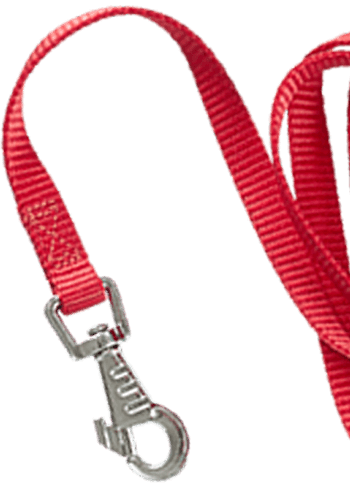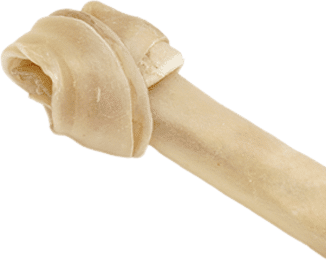


With their earnest eyes, friendly faces, and sleek coats, Labrador Retrievers have an irresistible charm. But beyond their picture-perfect appearance, are Labrador Retrievers good for first-time dog owners?
The answer to this question may not be the same for everyone. Get to know more about this iconic breed to discover if a Labrador could be the right choice for your first foray into the world of dog ownership.
Even though the Labrador Retriever dog breed is well-known for its intelligence, trainability, and family-friendly demeanor, there are still significant considerations that first time dog owners need to keep in mind when getting their first dog.
From their personality and behavior to their health issues and exercise needs, first time owners can learn a lot by doing upfront research about Labrador Retrievers and their breed-specific needs.
Laid-back Labrador Retrievers can fit in virtually anywhere: Labs get along well with other pets, even cats. They tend to be protective of children, and they are eager to please their human family members.
As pack animals, dogs want to be with their social circle throughout the day — that is, you and your family. Labrador Retrievers are one of the most sociable dog breeds.
If you work full-time outside the home, your Lab will need a visit about every four hours. So, if you’re a novice dog owner and don’t have a flexible schedule yet, plan to have a friend or family member drop by around lunchtime to give your Labrador a walk or some one-on-one playtime.
Of course, a reputable breeder will help you modulate your Lab’s naturally friendly and affectionate nature using proven training techniques.
As puppies, Labrador Retrievers are wonderful dogs resembling teddy bears, with adorably chunky paws. They grow into medium-large dogs, with sturdy frames, who weigh between 60 and 80 pounds (for males) and 55 and 75 pounds (for females).
Although they’ve become a family favorite, Labradors were originally bred as high-energy working dogs. Most adult Labs need a daily cardio workout, and many Labradors can exercise for two or more hours every day. In addition to playing endless games of fetch, these water-loving dogs enjoy swimming. If you don’t have an outdoor space that gives your Labrador a lot of room to roam, consider an indoor exercise routine for your dog.
Interactive puzzle toys provide both physical and mental stimulation for your curious, lively Lab. Look for toys that are dishwasher safe, since Labrador Retrievers tend to explore with their mouths.
Chewing is a very natural behavior for a Labrador Retriever. Unfortunately, your dog’s natural instinct to chew may not bode well for your footwear or other household objects — especially if your Lab is feeling isolated or anxious, since chewing can be a soothing behavior.
If you consistently give your Labrador better options, though, you can avoid chewing disasters that will make you gnash your own teeth in frustration.
If Labradors are kept well-supplied with dog-safe, eco-friendly chew toys — which often double as treat dispensers — they’ll be much less likely to chomp down on your brand-new boots.
With their outgoing personalities, these energetic dogs can behave impishly, much like overgrown children. While this might provide you some amusement, proper training can keep your Lab’s shenanigans from getting out of hand.
Fortunately, Labrador puppies are easy to train — and the sooner, the better. Training classes, even virtual ones, are widely available. If you decide to get an untrained pup, be prepared to consistently attend training sessions and follow-up with daily reinforcement activities at home.
Training a Labrador puppy early on means that you’ll have a pet who already understands basic commands and expected behaviors. It can make welcoming a new Lab into your home a calmer experience, saving you unnecessary behavioral issues.
Even a healthy dog faces a few health issues from time to time. Regular check-ups with a trusted veterinarian can help you spot warning signs, so your Lab can get any needed treatments to live a healthier life. We’ll look at a few health concerns for Labradors that you might encounter.
Labradors bring their zest for life to the food bowl. As a result, they tend to wolf down their food too quickly. When their stomachs fill with gas while they’re gobbling food, and then get twisted up, they can get a painful condition called “bloat.” If your dog’s belly swells up, and they look like they want to vomit but can’t, that’s the time for urgent medical attention.
A specially designed bowl, called a “slow feeder,” can help your enthusiastic Labrador avoid this problem. These inexpensive devices often look like puzzles or feature spiral patterns. When you pour food into a slow feeder, it falls into small compartments or channels. In order to enjoy the food, your Lab must slow down and carefully remove the food from the maze-like interior of the bowl. Make sure your lab rests for an hour after a meal or after drinking a lot of water to reduce the chance of bloating.
Like people, Labrador Retrievers are not immune to weight gain. Whether you choose kibble, wet food, or a combination of the two, avoid the temptation to share too many “treats” from your own plate, as they are not a healthy part of a dog’s diet. Follow a regular feeding schedule and be careful how much food you offer. Obesity in dogs can worsen conditions such as arthritis, hip or elbow dysplasia, and heart disease.
Again, using a slow feeder might help prevent your dog from gulping down too much food, although it’s also important to measure a consistent amount at each feeding.
Most Labradors live about 10-12 years. As your Lab ages, they might face serious health issues, such as heart disease or cancer. These two issues are prevalent in many breeds of dogs, with canine cancer rates about triple those of humans. Labrador cancers usually manifest as masses or growths, such as mast cell tumors.
Labradors are prone to a type of heart disease called Triscupid Valve Dysplasia. This disease, which is present at birth, can cause fluid buildup and gradually enlarge the right side of the heart. While there is currently no cure for TVD, it can be managed with medication and some exercise restrictions. In milder cases, Labs with the disease are expected to live a fairly normal lifespan.
Even younger Labrador Retrievers can sometimes have joint issues, such as hip or elbow dysplasia. Abnormal bone growth can prevent the dog’s hip or elbow joints from fitting correctly. If left untreated, this can cause pain and loss of full mobility. Regular checkups with your vet can help screen for this issue, so it can be treated early and the progression slowed.
Aside from surgery, a common treatment for these Labrador joint dysplasias includes special orthopedic braces. Another treatment option is hydrotherapy, which is simply exercise done in a heated pool — sometimes, incorporating an underwater treadmill. Water exercise takes much of the weight and pressure off of the dog’s joints while helping maintain muscle.
Labradors can also be susceptible to retinal dysplasia, an eye disorder that causes blind spots (and sometimes, complete blindness). Labs are also more likely than other dogs to experience progressive rod-cone degeneration, which is caused by a genetic mutation and leads to blindness. Neither of these conditions is painful, and most Labradors adapt well to vision impairment or loss.
While not much can be done for genetic conditions, problems like arthritis — which affects about one-fifth of adult dogs, regardless of breed — can be avoided or minimized simply by keeping your Lab from becoming obese. There are also certain nutritional supplements that can help Labradors repair torn cartilage from osteoarthritis and reduce the pain your dog might feel.
Even though Labradors are short-coated dogs, they have a double coat of fur. This is due to their breed’s history of working in the waters with the fishermen of St. John’s, Newfoundland: They developed a water-repellent outer coat to keep their inner coat warm and dry. The downside of this adaptation is that Labrador Retrievers shed much more than some other dogs.
Labs need to be groomed at least once a week. This may include cleaning their floppy ears, which can be prone to irritations.
A variety of brushes help keep shedding under control. For Labrador Retrievers, it’s best to use a rubber curry comb and a shedding blade. However, if you have any concerns or are pressed for time to groom your dog, always consult a professional groomer to help you along the way.
In addition to a grooming routine to reduce shedding, you may need to vacuum more frequently. A robot vacuum, available in a wide range of prices, can reduce the effort needed to maintain a tidy home. Of course, a regular vacuum cleaner will work just as well for picking up your Labrador’s hair; it simply requires more effort.
Now that you have a clearer idea of what life is like with a Labrador Retriever, you’re closer to deciding whether one would be a good fit for you and your family. As a first-time dog owner, you’ll doubtlessly have many questions. Experienced breeders and trainers, like the staff at Snowy Pines White Labs, can answer your questions and guide you through the process of choosing your perfect pup.